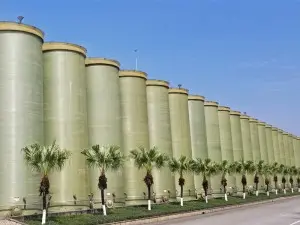
-
 Afrikaans
Afrikaans -
 Albanian
Albanian -
 Amharic
Amharic -
 Arabic
Arabic -
 Armenian
Armenian -
 Azerbaijani
Azerbaijani -
 Basque
Basque -
 Belarusian
Belarusian -
 Bengali
Bengali -
 Bosnian
Bosnian -
 Bulgarian
Bulgarian -
 Catalan
Catalan -
 Cebuano
Cebuano -
 China
China -
 China (Taiwan)
China (Taiwan) -
 Corsican
Corsican -
 Croatian
Croatian -
 Czech
Czech -
 Danish
Danish -
 Dutch
Dutch -
 English
English -
 Esperanto
Esperanto -
 Estonian
Estonian -
 Finnish
Finnish -
 French
French -
 Frisian
Frisian -
 Galician
Galician -
 Georgian
Georgian -
 German
German -
 Greek
Greek -
 Gujarati
Gujarati -
 Haitian Creole
Haitian Creole -
 hausa
hausa -
 hawaiian
hawaiian -
 Hebrew
Hebrew -
 Hindi
Hindi -
 Miao
Miao -
 Hungarian
Hungarian -
 Icelandic
Icelandic -
 igbo
igbo -
 Indonesian
Indonesian -
 irish
irish -
 Italian
Italian -
 Japanese
Japanese -
 Javanese
Javanese -
 Kannada
Kannada -
 kazakh
kazakh -
 Khmer
Khmer -
 Rwandese
Rwandese -
 Korean
Korean -
 Kurdish
Kurdish -
 Kyrgyz
Kyrgyz -
 Lao
Lao -
 Latin
Latin -
 Latvian
Latvian -
 Lithuanian
Lithuanian -
 Luxembourgish
Luxembourgish -
 Macedonian
Macedonian -
 Malgashi
Malgashi -
 Malay
Malay -
 Malayalam
Malayalam -
 Maltese
Maltese -
 Maori
Maori -
 Marathi
Marathi -
 Mongolian
Mongolian -
 Myanmar
Myanmar -
 Nepali
Nepali -
 Norwegian
Norwegian -
 Norwegian
Norwegian -
 Occitan
Occitan -
 Pashto
Pashto -
 Persian
Persian -
 Polish
Polish -
 Portuguese
Portuguese -
 Punjabi
Punjabi -
 Romanian
Romanian -
 Russian
Russian -
 Samoan
Samoan -
 Scottish Gaelic
Scottish Gaelic -
 Serbian
Serbian -
 Sesotho
Sesotho -
 Shona
Shona -
 Sindhi
Sindhi -
 Sinhala
Sinhala -
 Slovak
Slovak -
 Slovenian
Slovenian -
 Somali
Somali -
 Spanish
Spanish -
 Sundanese
Sundanese -
 Swahili
Swahili -
 Swedish
Swedish -
 Tagalog
Tagalog -
 Tajik
Tajik -
 Tamil
Tamil -
 Tatar
Tatar -
 Telugu
Telugu -
 Thai
Thai -
 Turkish
Turkish -
 Turkmen
Turkmen -
 Ukrainian
Ukrainian -
 Urdu
Urdu -
 Uighur
Uighur -
 Uzbek
Uzbek -
 Vietnamese
Vietnamese -
 Welsh
Welsh -
 Bantu
Bantu -
 Yiddish
Yiddish -
 Yoruba
Yoruba -
 Zulu
Zulu
frp materials for heat and nuclear power applications
FRP Materials for Heat and Nuclear Power Applications
Fiber-reinforced polymer (FRP) materials have garnered significant attention in various engineering applications due to their unique properties, particularly in heat and nuclear power industries. These composite materials, composed of a polymer matrix reinforced with fibers (often glass, carbon, or aramid), offer a combination of high strength-to-weight ratios, corrosion resistance, and thermal stability, making them ideal for challenging operational environments typical in energy generation settings.
FRP Materials for Heat and Nuclear Power Applications
In terms of thermal properties, FRP materials can withstand substantial temperature variations without significant deformation or degradation. This is particularly important in nuclear power plants where reactor cores and cooling systems operate under extreme thermal conditions. The thermal conductivity of FRP can be engineered to meet specific operational requirements, ensuring efficient heat transfer while maintaining structural integrity. This adaptability allows for the optimal design of components such as pipes, casings, and insulators that are crucial in managing heat flow and radiation shielding.
frp materials for heat and nuclear power applications

Corrosion resistance is another critical factor that makes FRP suitable for heat and nuclear power applications. Traditional materials like metals can suffer from corrosion due to exposure to high temperatures and aggressive chemicals found in cooling systems or even in the environment surrounding a power plant. FRP materials, on the other hand, are inherently resistant to most chemically aggressive substances, significantly extending the lifespan of components that operate under such conditions. This durability not only reduces maintenance costs but also enhances the overall safety of power generation facilities by minimizing the risk of component failure.
In the context of nuclear applications, safety is paramount. The use of FRP materials can be a deciding factor in the development of systems and structures that can withstand the intense stresses imposed during normal operation and accident scenarios. For example, FRP is increasingly being evaluated for use in radiation shielding applications. While traditional dense materials like lead are typically employed, FRP offers a lightweight alternative that can be molded to complex shapes and is easier to install. This adaptability enables better design flexibility while maintaining effective radiation protection, critical in a nuclear power context.
Moreover, the ability to tailor the mechanical and physical properties of FRP through careful selection of fibers and matrix materials means that engineers can create composites specifically designed for unique applications within the energy sector. The ongoing research and development in this field promise advancements in FRP technology that will continue to enhance their applicability in scenarios involving high heat and radiation.
In conclusion, FRP materials are increasingly recognized as valuable solutions for heat and nuclear power applications. Their lightweight nature, thermal stability, corrosion resistance, and customizable properties provide significant benefits in terms of performance, safety, and cost-effectiveness. As energy demands grow and the need for sustainable and safe power generation methods becomes more pressing, the role of FRP materials is likely to expand, paving the way for innovative solutions in the energy sector. Continued research and investment in FRP technology will undoubtedly yield further advancements, contributing to the efficiency and safety of heat and nuclear power applications around the world.
Latest news
-
Exploring the Benefits of Top Hammer Drifter Rods for Enhanced Drilling PerformanceNewsJun.10,2025
-
High-Precision Fiberglass Winding Machine for GRP/FRP Pipe Production – Reliable & Efficient SolutionsNewsJun.10,2025
-
FRP Pipes & Fittings for Shipbuilding - Corrosion-Resistant & LightweightNewsJun.09,2025
-
Premium FRP Flooring Solutions Durable & Slip-ResistantNewsJun.09,2025
-
Premium Fiberglass Rectangular Tanks Durable & Lightweight SolutionNewsJun.09,2025
-
Tapered Drill String Design Guide Durable Performance & UsesNewsJun.09,2025









